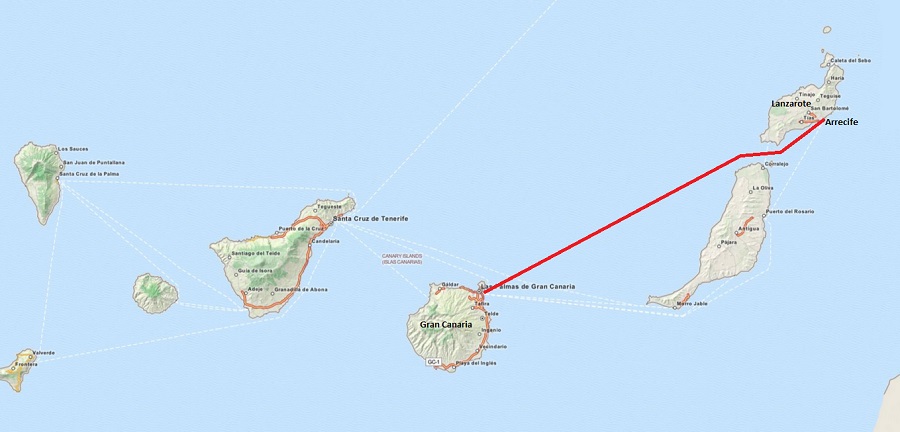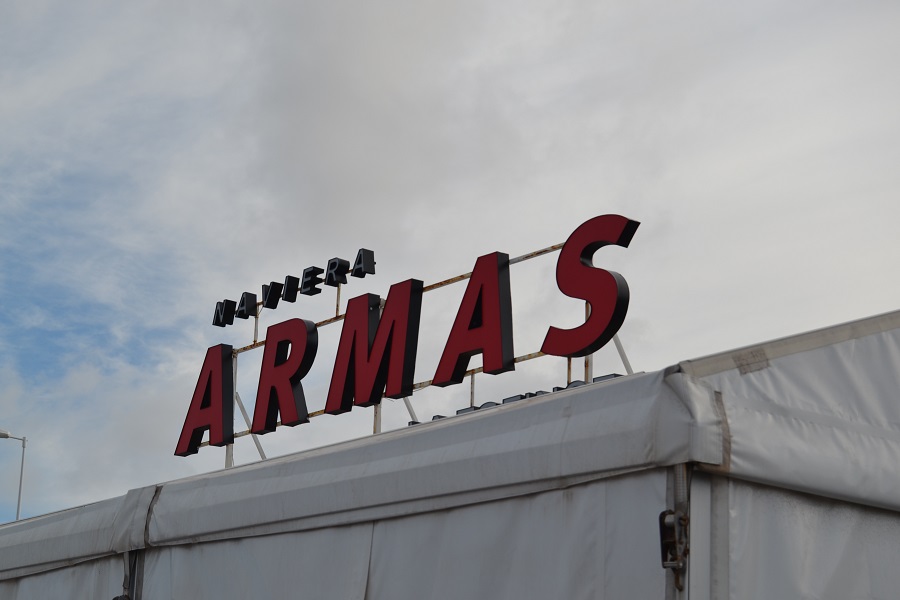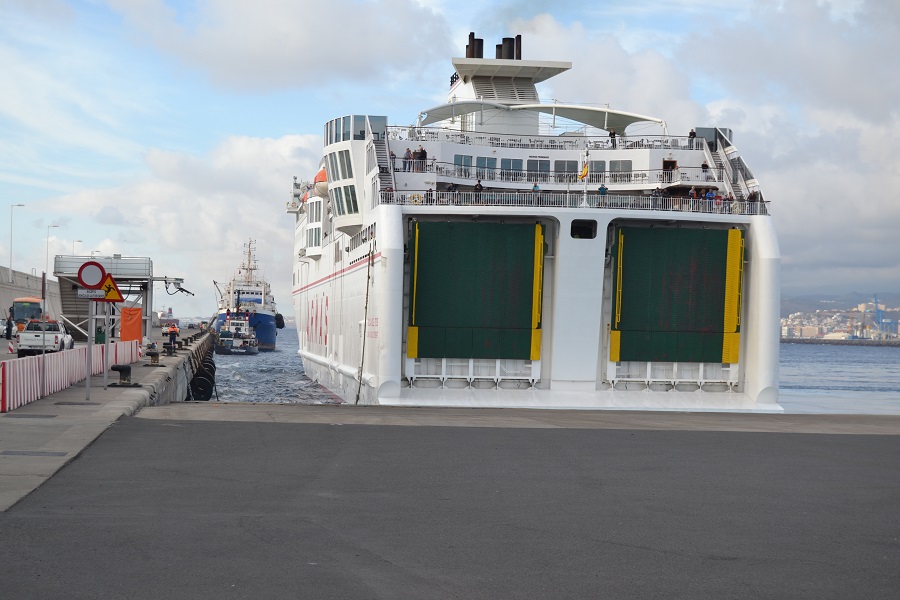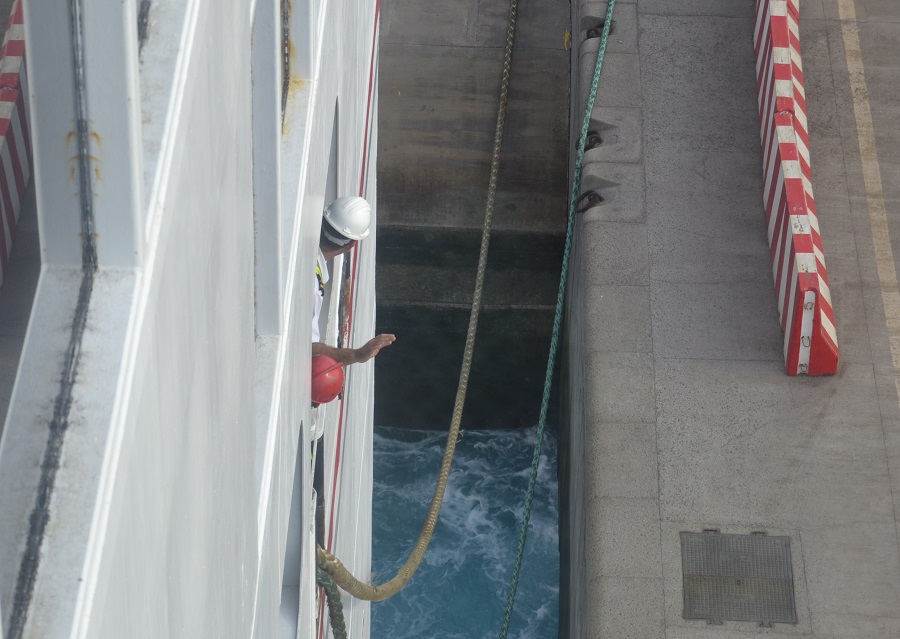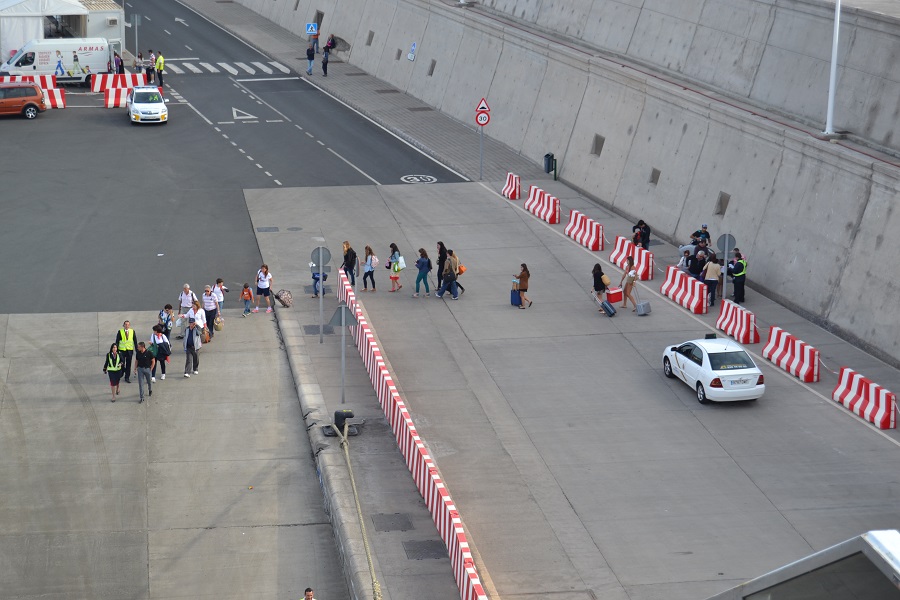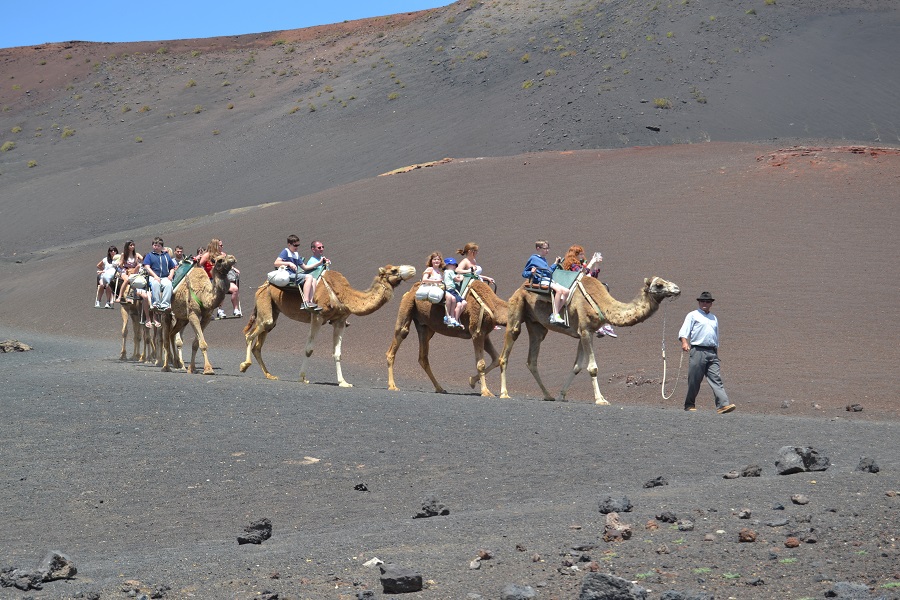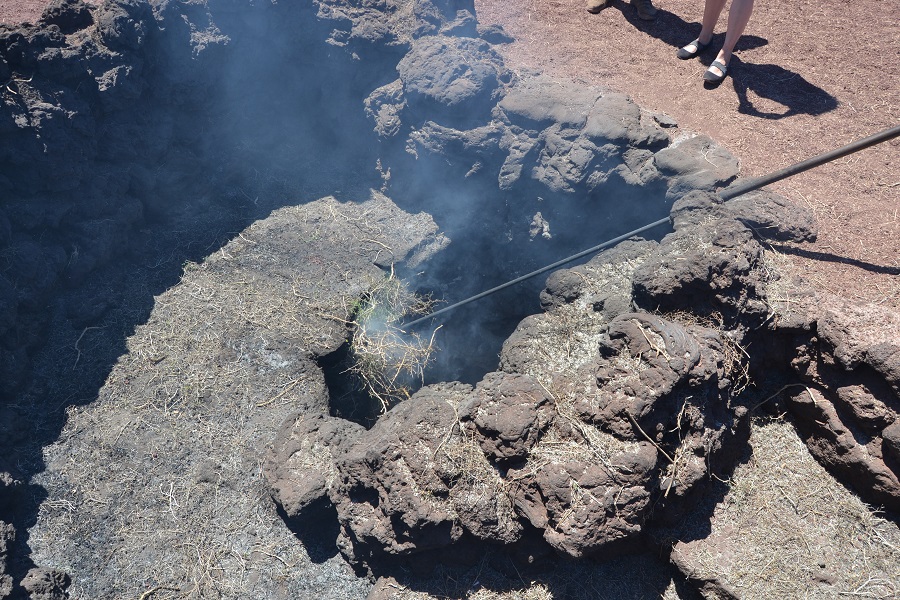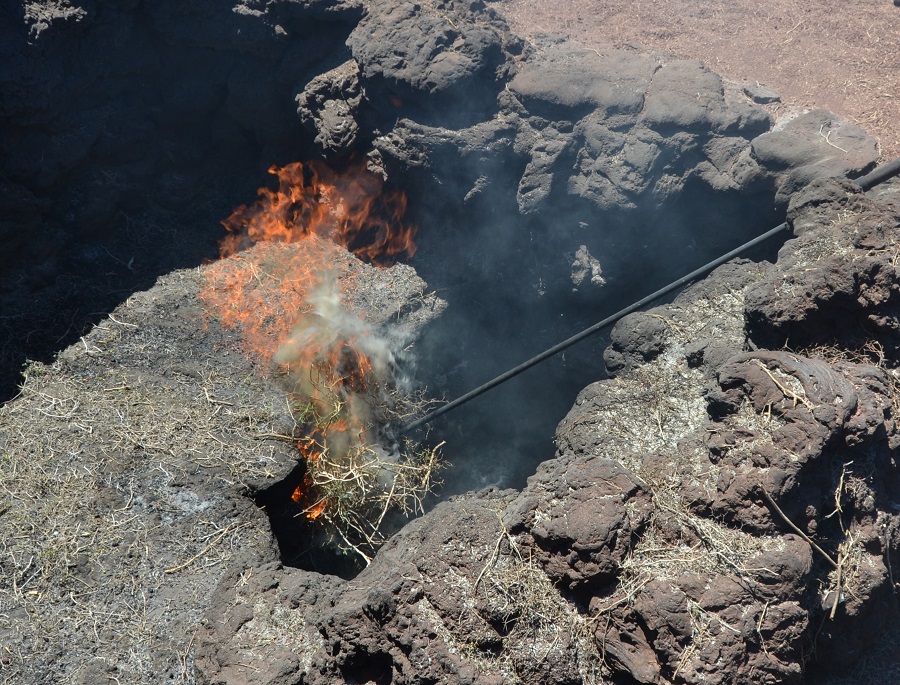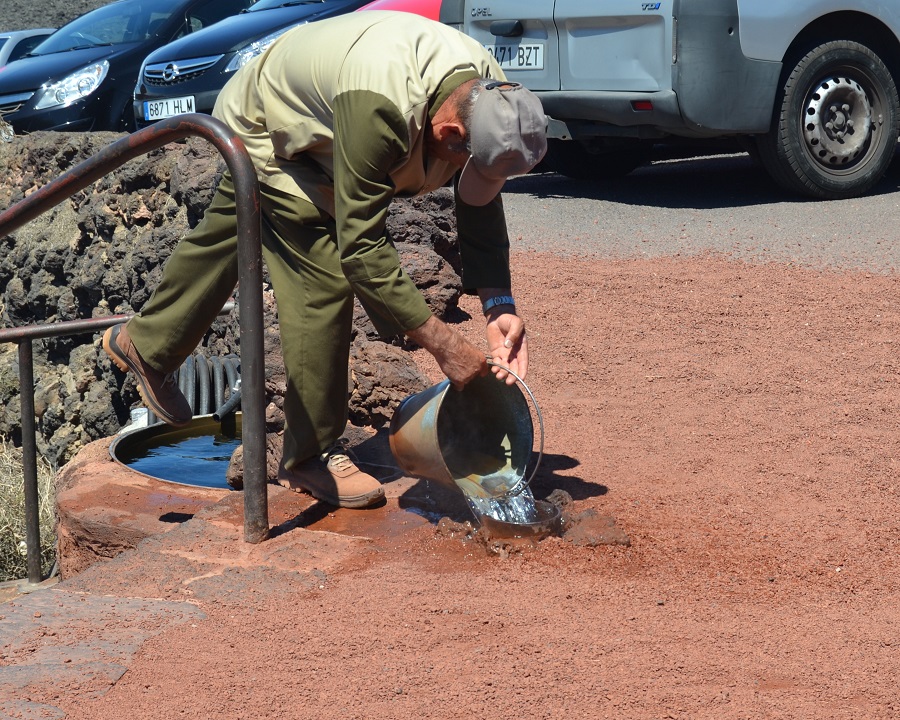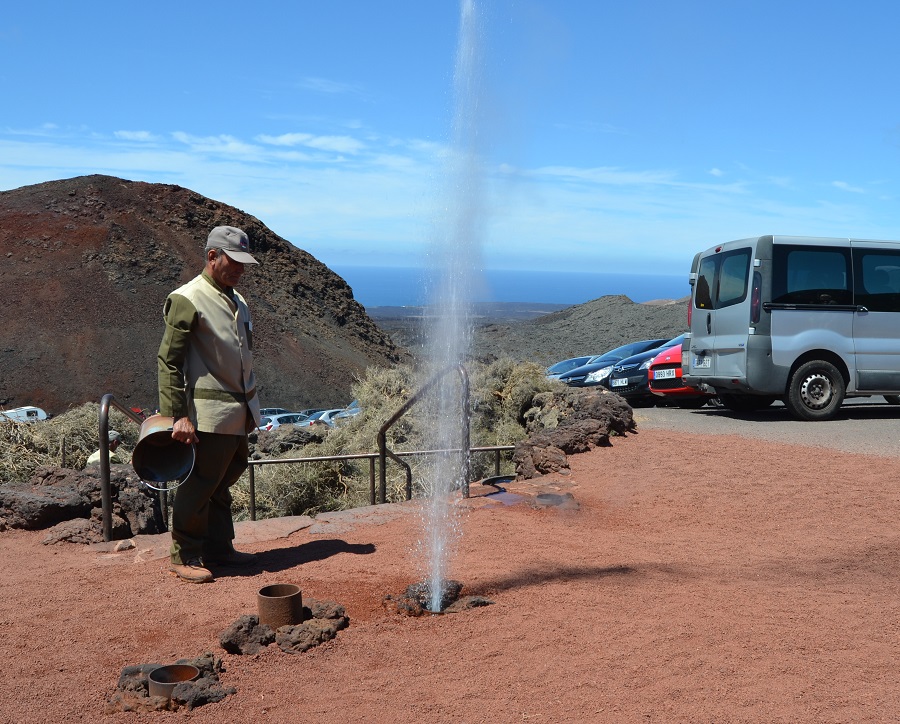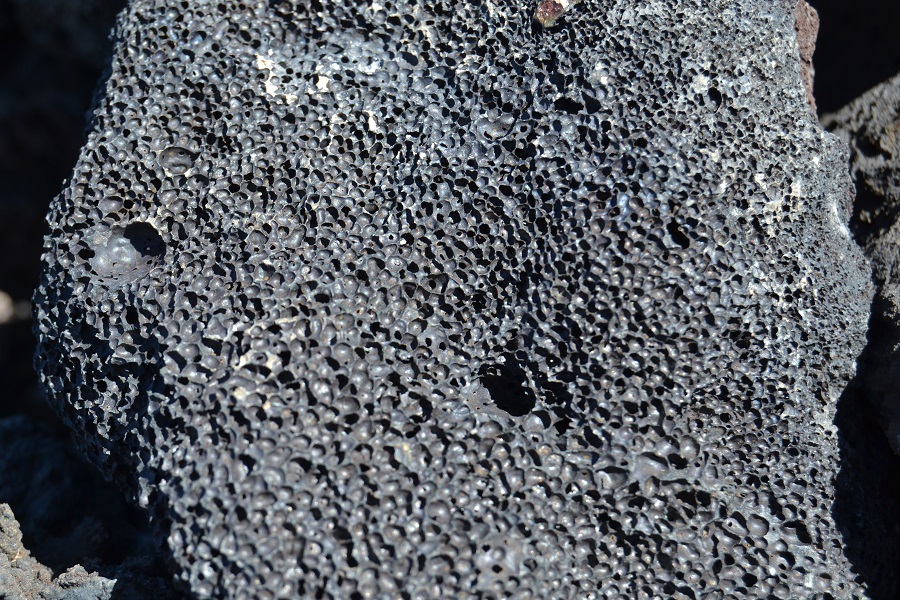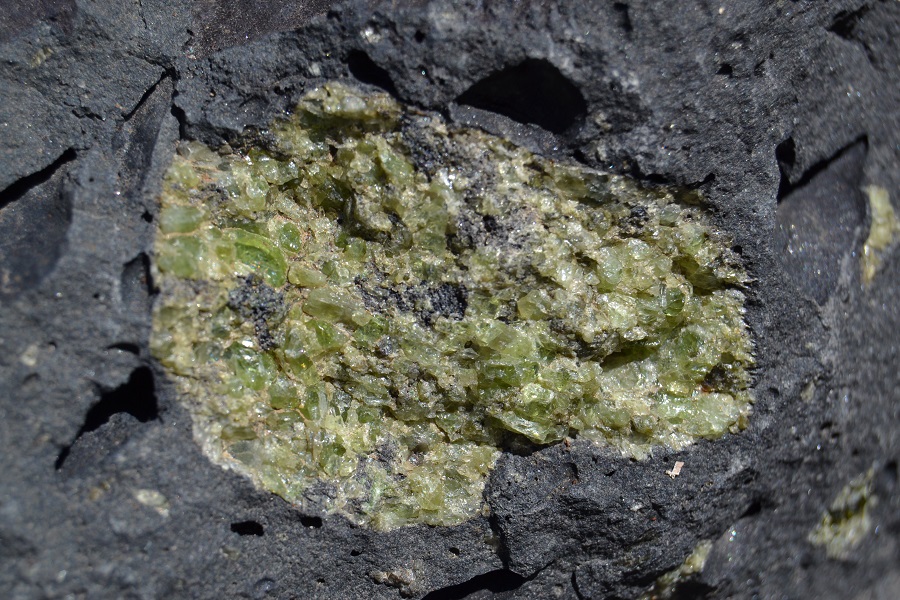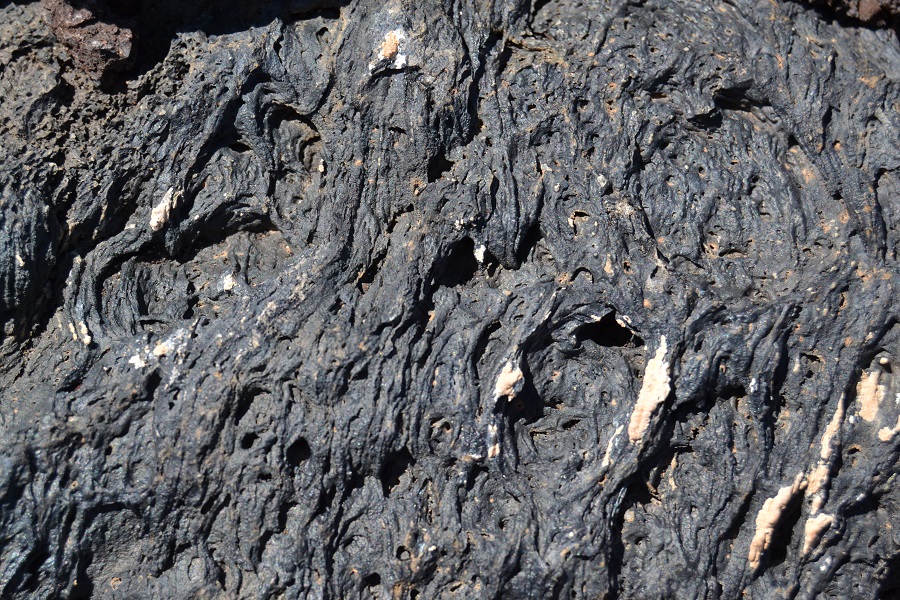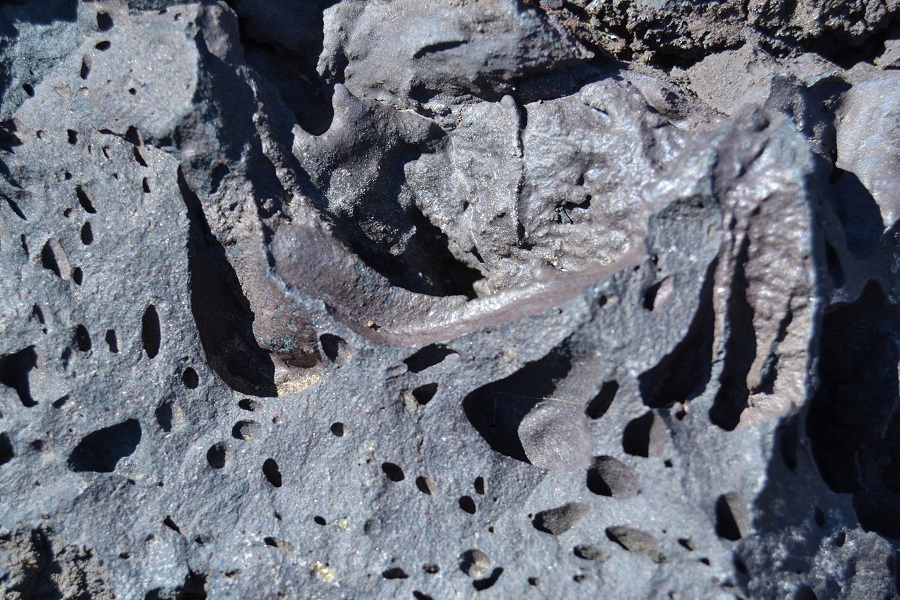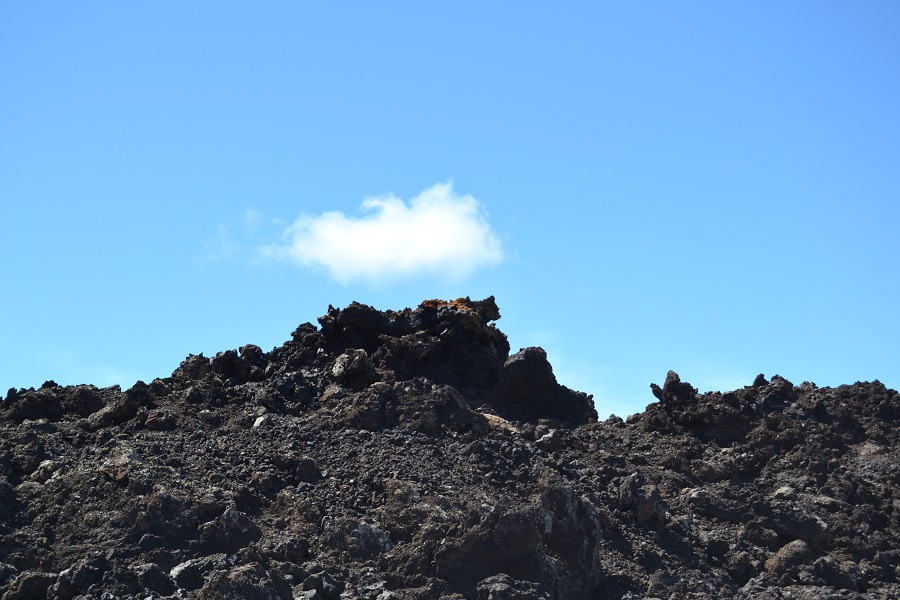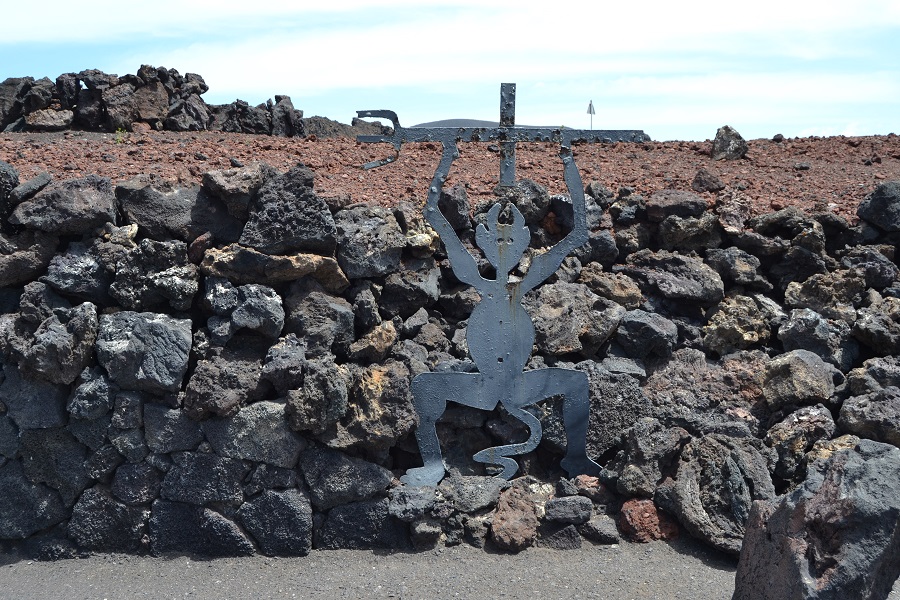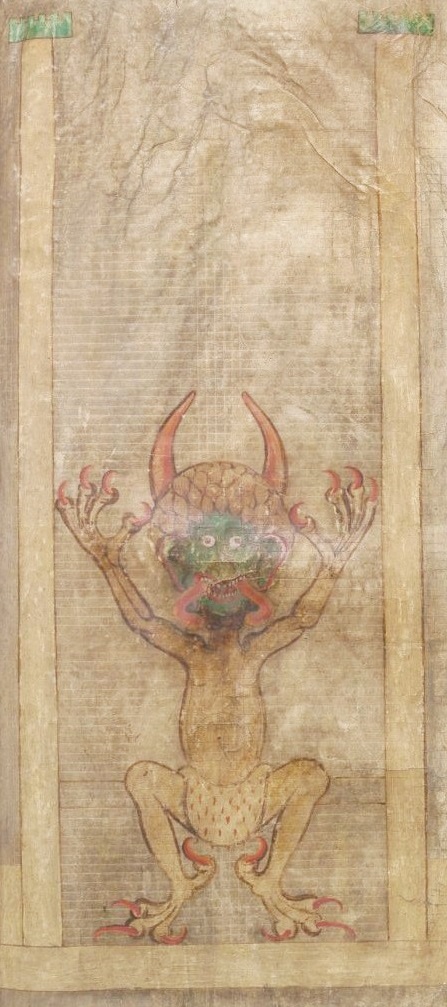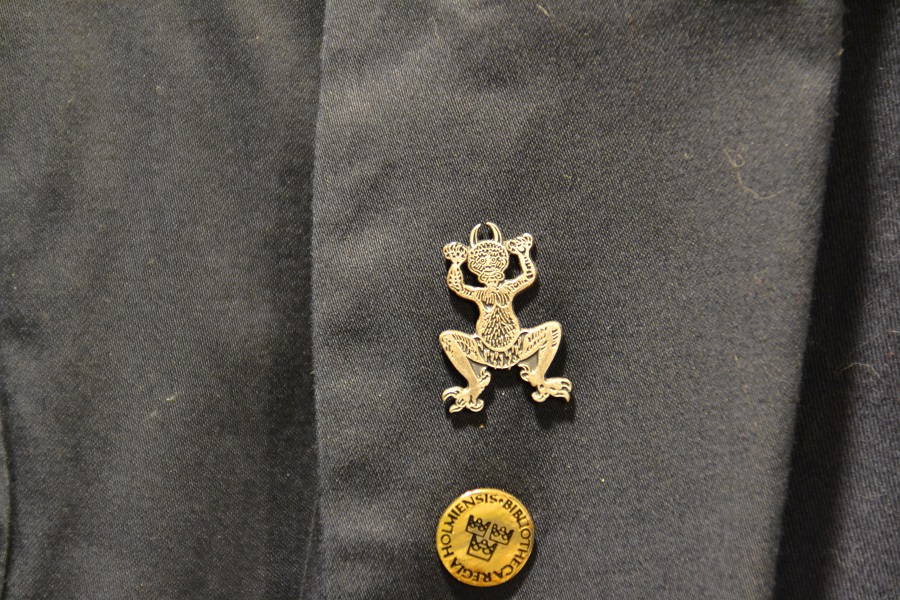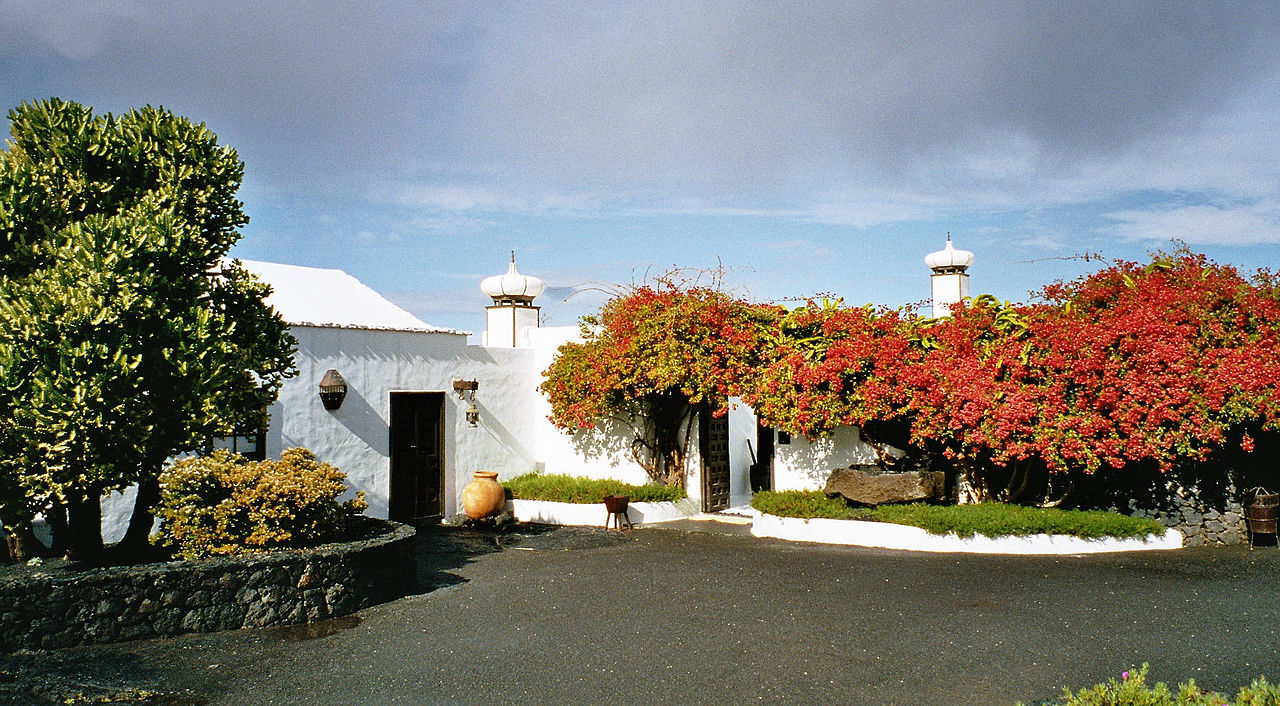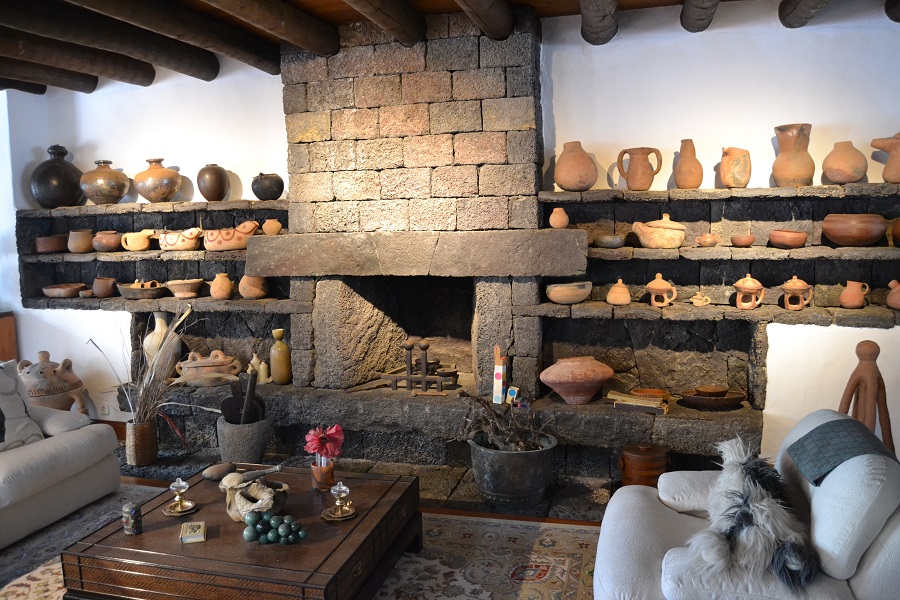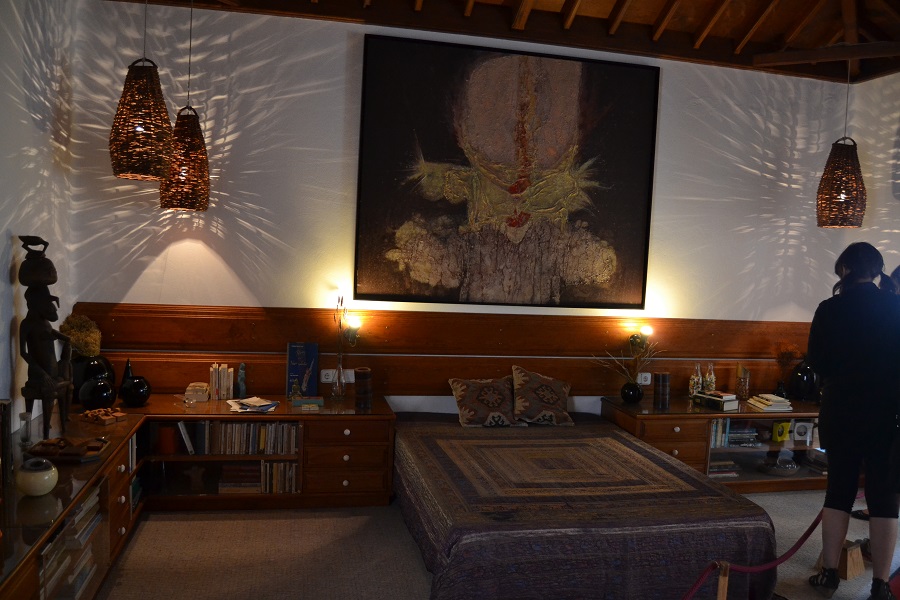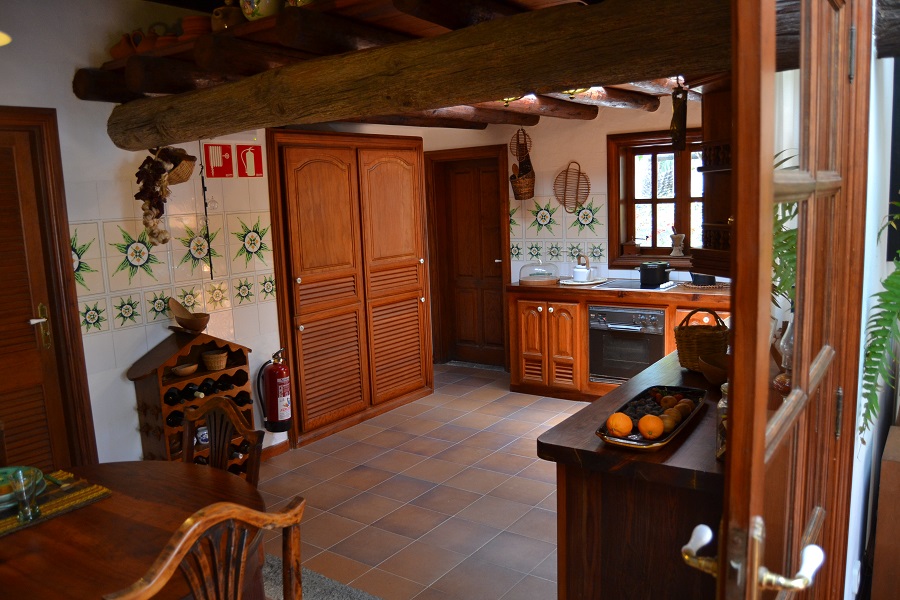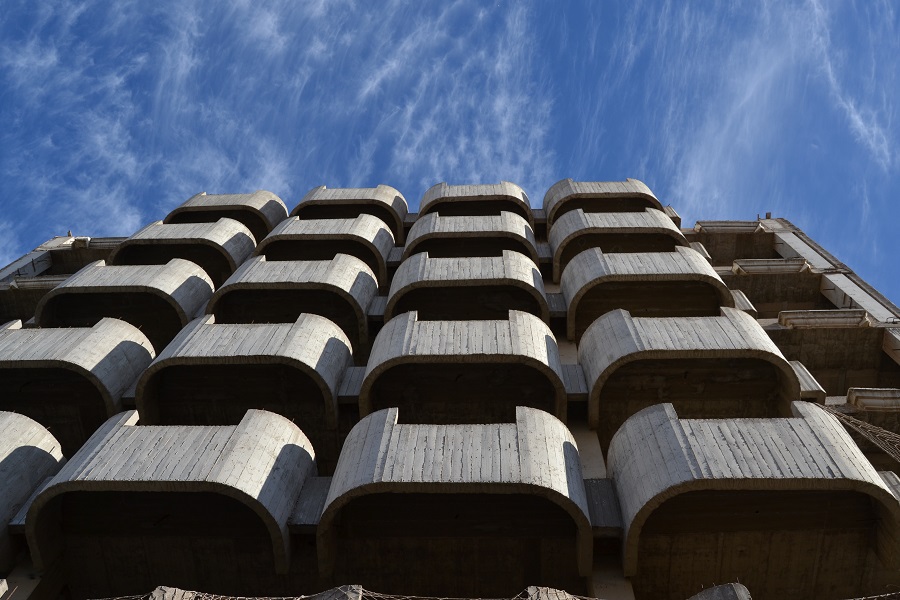
 2. A trip to Lanzarote 2014
2. A trip to Lanzarote 2014


by Johan Kjellander 2014
With the Armas ferry from Las Palmas to Arrecife
During Easter 2014 Tove and I took the ferryboat Volcan de Teide from Las Palmas to Arrecife on the island of Lanzarote. We booked a hotel in advance and had 2 full days with a car to explore the island before we went back with the same ferry.
The ferry takes the shortest route from Las Palmas to Arrecife, through the strait between Lanzarote and Fuerteventura, approximately 120 NM. The trip took 5 hours and the cost was 43€ per person, one way.
In the harbour, she turns around and approaches her mooring in reverse. Two big ramps open and cars and trucks unload quickly. The handling of passengers however is more old fashion.
Lanzarote is not as high as Gran Canaria and therefore it does not get as much rain. Most of the island is volcanic desert. In many places traces of violent volcanic activity can be seen. You can even visit some of them on the back of a camel.
A big volcanic eruption hit Lanzarote in 1730 that covered almost 25% of the island with lava. This area today, almost 300 years later, is a nature reserve and popular tourist attraction. In Montanas de Fuego (Fire Mountains) the ground is still very hot in some places.
A steel tube has been drilled into the hot ground to create an artificial geyser. A guard pours water into it. Very spectacular of course, but compared to real geysers, like Old Faithful in Yellowstone National Park USA or the original geyser itself, Geysir on Iceland, it is not that impressive.
When lava cools and solidifies it can take many fantastic shapes and colors depending on the amount of gas it holds and the different chemicals it is composed of.
The relatively young lava here is still very rocky and sharp. There is almost no vegetation.
Lanzarote is sometimes called The Devils Island. Artist Cesar Manrique, who lived here, created the figure to the left above as a symbol for the Montanas de Fuego. Maybe he was inspired by the similar figure in the 800 year old Devils Bible of the Royal Swedish Library in Stockholm. If you visit the library you can see the old bible and even bye a pin.
Cesar Manrique was also an architect and very involved in the development of the island. You can see traces of him everywhere. One is the Mirador del Rio high up on the northern tip of the island. Here he used what nature had created and shaped it into a big cave with restaurant and an outside balcony with a magnificent view over the neighbouring island. His designs are simple and beautiful.
Graciosa Island and the strait del Rio seen from the balcony of Mirador del Rio. Small and simple but popular among sailors for low prices and calm life.
Manriques home, photo by Alexander Hauck, © Public Domain
Cesar Manriques former home is now a museum. A fantastic house with very beautiful gardens and his studio where he worked.
He designed everything himself of course. Simple materials, wood and and stone. White and different shades of brown. Very tasteful.
He also designed a big garden with pools and plantations. I think the picture above shows a typical garden installation by Manrique. Nature itself is so beautiful, you only need to help it along with a simple white pot.
Dry and windy but with low wind shields of volcanic rock and the ground covered with ash it is still possible to grow grapes of good quality. A good wine was El Grifo (Swedish: Gripen).
The dry and windy climate is tough for the fauna. We did not find many wild flowers on Lanzarote but they do exist. The one to the right is Aloe Vera.
The only wild animals we saw were birds and lizzards. Camels are used to carry tourists. This one, we found in the agricultural outdoor museum, El Patio. Strange animal, isn't it ?
Not operational any more but this was once a big field for salt production. Seawater was led in to shallow pools and then evaporated under the hot sun. Left was the salt.
The last picture from Lanzarote is a house front full of balconies in Arrecife. Taken from below with the blue sky above makes a strange impression.
